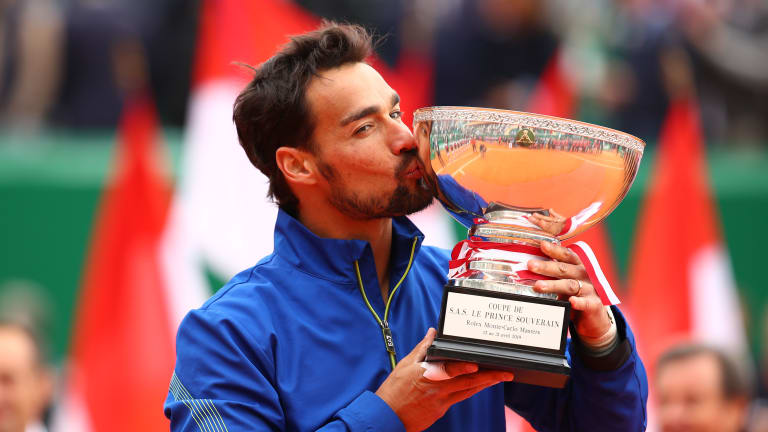ATP Monte Carlo, Monaco
Fognini puts the finishing touches on his Monte Carlo masterpiece
By Apr 21, 2019ATP Monte Carlo, Monaco
Can Stefanos Tsitsipas win a big title somewhere else this spring?
By Apr 15, 2024ATP Monte Carlo, Monaco
Tsitsipas sweeps aside Ruud to win Monte Carlo Masters for the third time, and then weeps
By Apr 14, 2024ATP Monte Carlo, Monaco
Stefanos Tsitsipas wins third Monte Carlo Masters 1000 title in last four years
By Apr 14, 2024ATP Monte Carlo, Monaco
2024 Monte Carlo final preview: Ruud, Tsitsipas are making this clay season a little less predictable
By Apr 13, 2024ATP Monte Carlo, Monaco
Stefanos Tsitsipas shrugs off double-fault controversy en route to Monte Carlo final
By Apr 13, 2024ATP Monte Carlo, Monaco
Casper Ruud finally beats Djokovic and Stefanos Tsitsipas downs Sinner to set up Monte Carlo Masters final
By Apr 13, 2024ATP Monte Carlo, Monaco
Casper Ruud battles past Novak Djokovic in Monte Carlo semifinals for biggest win of career
By Apr 13, 2024ATP Monte Carlo, Monaco
Preview: Are Novak Djokovic and Jannik Sinner primed to meet for the Monte Carlo title?
By Apr 12, 2024ATP Monte Carlo, Monaco
Jannik Sinner conquers Holger Rune, rolls into Monte Carlo semifinals
By Apr 12, 2024ATP Monte Carlo, Monaco
Fognini puts the finishing touches on his Monte Carlo masterpiece
Playing with ease and competing with purpose—more of that Fognini in the future, please. May the fog stay lifted, and his moment of clarity continue.
Published Apr 21, 2019
Advertising

Fognini puts the finishing touches on his Monte Carlo masterpiece
© Getty Images